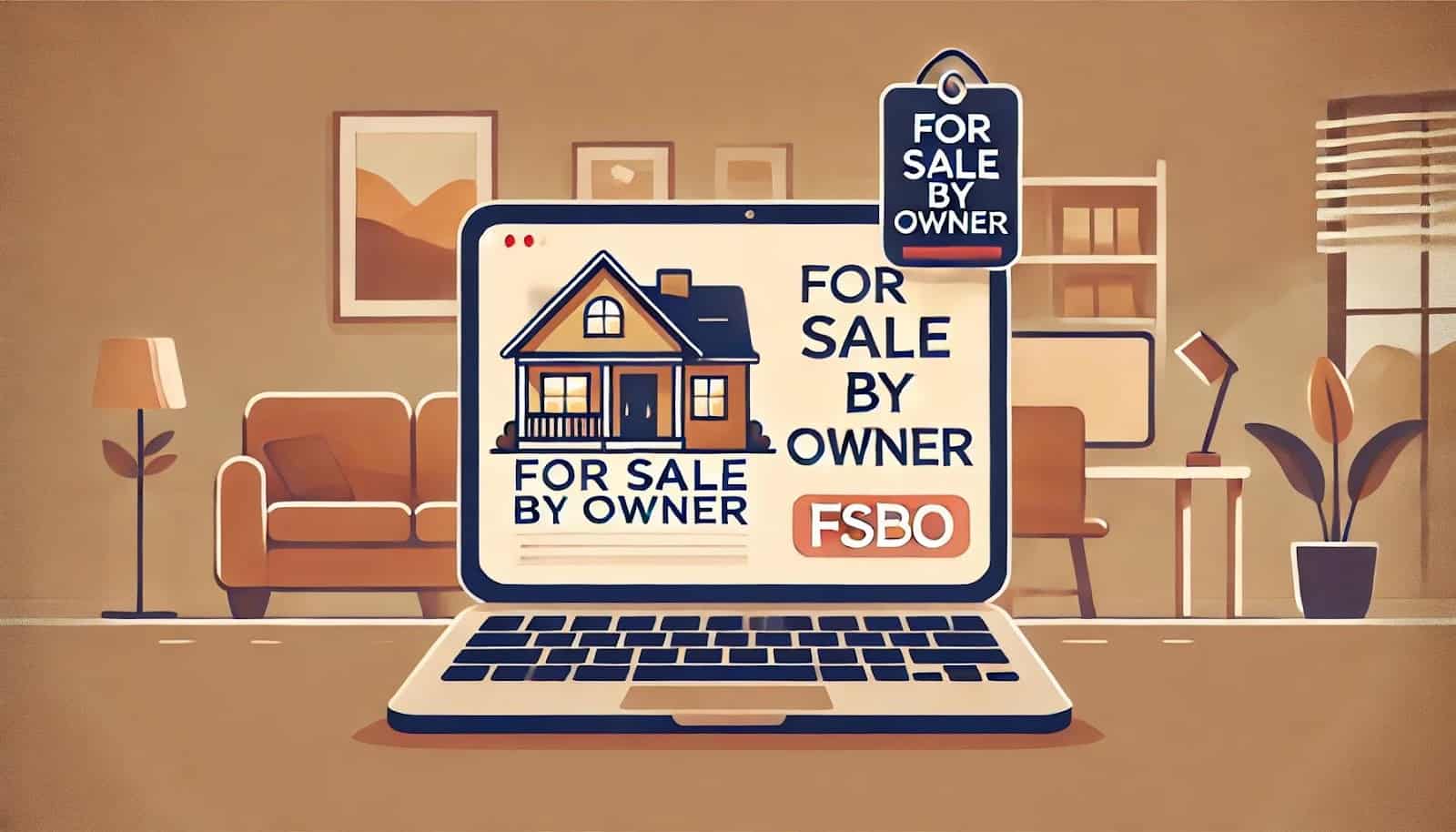
Selling a House Without a Realtor in Texas: An Essential Guide
Selling a home is one of the largest financial transactions most people will ever make, and doing it without a realtor adds another layer of responsibility. While skipping the agent can save you thousands in commission fees, it may also mean you’ll be in charge of pricing, marketing, negotiating, and handling legal paperwork. The key to success lies in careful planning and a thorough understanding of the process.
Selling your home without a realtor, commonly known as For Sale By Owner (FSBO), can be a rewarding endeavor, offering significant savings. However, it requires a comprehensive understanding of the process, meticulous preparation, and adherence to legal requirements. This guide provides a detailed roadmap to successfully navigate the FSBO journey, ensuring you cover all essential steps to avoid common pitfalls.
1. Preparing to Sell Your Home Without a Realtor
Before you list your home, it’s crucial to ensure it is in the best possible condition. As a homeowner selling independently, you must handle all the responsibilities, from research to marketing and negotiations, to attract more buyers and potentially receive higher offers.
Understanding Your Options
When it comes to selling your house, you have several options to consider. One of the most important decisions you’ll make is whether to work with a real estate agent or to sell your house without one.
Selling with a Real Estate Agent
Selling with a real estate agent can provide several benefits, including:
Access to a Wider Pool of Potential Buyers: Real estate agents can list your property on the multiple listing service (MLS), which is a powerful tool for reaching a broad audience of potential buyers.
Professional Marketing and Advertising: Agents have the expertise to market your property effectively, using professional photography, staging, and advertising strategies to attract buyers.
Guidance on Pricing and Staging: Real estate agents can help you set a competitive sales price and offer advice on staging your home to make it more appealing to buyers.
Assistance with Negotiations and Closing: Agents are skilled negotiators who can help you navigate offers and counteroffers, ensuring you get the best possible deal. They also assist with the closing process, making sure all paperwork is in order.
Representation by a Licensed Professional: Real estate agents are familiar with local laws and regulations, providing you with peace of mind that your transaction is legally sound.
However, working with a real estate agent also means paying a commission fee, which can range from 4-6% of the sales price. This fee is typically split between the listing agent and the buyer’s agent.
Assessing and Enhancing Property Condition
Begin by evaluating your home’s condition. Address necessary repairs, focusing on issues that could deter potential buyers. Enhancing curb appeal through landscaping, fresh paint, and decluttering can make a significant difference. First impressions matter—buyers often decide within seconds whether they’re interested in a home, so ensure the exterior is as inviting as possible.
Staging and Photography
Staging your home creates an inviting atmosphere, helping buyers envision themselves in the space. Professional photography is crucial, as high-quality images are a primary draw for online listings. Consider hiring a real estate photographer who specializes in lighting and angles that highlight your home’s best features. If hiring a professional isn’t feasible, use a good-quality camera or smartphone with proper lighting to capture clear and attractive photos.
Additionally, a virtual tour can significantly enhance your listing’s appeal. Buyers appreciate the opportunity to explore a home remotely before scheduling an in-person visit. The best online home selling platforms allow for 3D tours, which can help make your listing stand out in a competitive market. Utilizing online listing platforms is essential to maximize visibility and attract a larger pool of potential buyers.
2. Setting the Right Price
Determining an accurate listing price is essential to attracting buyers and ensuring a smooth transaction. A well-priced home will generate interest without leaving money on the table. Understanding the real estate market is crucial to set a competitive price.
Ensuring Your Price is Backed by Documentation
Pricing your home accurately isn’t just about comparing nearby sales; it’s also about ensuring you have the right paperwork to justify your asking price. Buyers and lenders may request documentation such as property tax assessments, recent appraisals, or records of major renovations that add value. Having these documents ready can help you confidently defend your price if buyers push back.
Conducting a Comparative Market Analysis (CMA)
Research recent sales of similar properties in your area to determine a competitive price. While online platforms provide basic valuation tools, specialized FSBO support services can offer more accurate pricing assistance to help you sell your home without a realtor at the optimal price point.
Understanding Real Estate Market Trends
Stay informed about local real estate trends, including average days on market and seasonal demand fluctuations, to strategically price your home. If homes in your area are selling quickly, you may be able to price slightly higher. If the market is slow, pricing competitively could help attract more buyers.
Considering Buyer Psychology
Pricing your home slightly below similar listings can generate more interest and potentially lead to multiple offers. Additionally, consider listing at a just-below-threshold price (e.g., $299,900 instead of $300,000).
Many buyers use search filters with cutoffs at round numbers, such as homes listed under $300,000. A listing priced at $299,900 will still appear in searches for homes under $300,000, whereas a home priced exactly at $300,000 may not show up for buyers who set their maximum budget at that amount.
3. Marketing Your Property
Effective marketing ensures that your home reaches the widest audience possible. A strong strategy will help you stand out from the competition. FSBO sales (For Sale By Owner) and the use of online listing platforms are crucial for sellers looking to save on commission costs and gain control over the selling process while maximizing visibility and attracting potential buyers.
Preparing Key Documents for Buyers
Before listing your home, ensure you have essential paperwork available for prospective buyers. Having these documents ready can streamline the process and build trust with potential buyers. Here are some key documents you should prepare:
Property Disclosure Form – Outlines known issues with the home, including structural concerns, past repairs, or environmental hazards.
Recent Repair Receipts – Provides proof of maintenance or improvements made to the home, reassuring buyers about the property’s condition.
Homeowners Association (HOA) Documents – If applicable, details HOA rules, fees, and regulations that buyers need to be aware of.
Survey and Property Boundaries – A survey shows the exact property lines, which is especially important if there are fences, driveways, or shared spaces.
Title Report – Confirms legal ownership of the property and ensures there are no outstanding liens or disputes.
Mortgage Payoff Statement – If you have an existing mortgage, this document shows the remaining balance and helps in calculating closing costs.
Preliminary Title Report – Allows buyers to verify there are no claims, easements, or other issues with the property title.
Utility Bills and Property Tax Records – Helps buyers estimate ongoing homeownership costs.
By organizing these documents ahead of time, you can provide buyers with a transparent and efficient transaction, reducing delays and avoiding last-minute surprises.

Listing on Multiple Listing Service Platforms
To reach a broad audience, list your property on various real estate websites, social media platforms, and consider traditional methods like yard signs. Many FSBO sellers overlook the importance of exposure—using a combination of online and offline marketing ensures your home reaches the maximum number of potential buyers. Additionally, consider the advantages and drawbacks of cash buyers; they can expedite the sales process by purchasing homes outright without financing, but they may negotiate lower prices and eliminate the potential for bidding wars.
Utilizing a flat-fee MLS (Multiple Listing Service) will increase visibility among buyers’ agents. When you sell your home without a realtor, gaining MLS access can be challenging, but flat-fee services can provide this crucial exposure while letting you maintain control of your sale process.
Crafting a Compelling Listing
Write a detailed and engaging property description highlighting key features, recent upgrades, and neighborhood amenities. Incorporate high-quality photos and virtual tours to attract online viewers. Don’t just list features—paint a picture for buyers. Instead of saying “3-bedroom home with a backyard,” say, “This charming 3-bedroom home boasts a spacious backyard, perfect for entertaining or enjoying peaceful evenings under the stars.”
Leveraging Social Media
Platforms like Facebook Marketplace, Instagram, and Nextdoor can significantly expand your reach. Posting a virtual tour or live walkthrough on Facebook Live or Instagram Stories can generate real-time engagement. Encourage friends and family to share your listing to increase visibility.
4. Managing Inquiries and Showings
How you handle buyer inquiries can significantly impact their interest level and perception of your property. Being prepared with information and maintaining a professional approach will help you convert inquiries into serious offers.
Working with Buyers
When selling your house without a real estate agent, you’ll need to be prepared to work directly with buyers and their agents.
Understanding the Buyer’s Perspective
Buyers often have a lot of questions and concerns when purchasing a home, and it’s your job as the seller to address these concerns and provide them with the information they need to make an informed decision. Some things to keep in mind when working with buyers include:
Provide Detailed Information: Be prepared to offer comprehensive details about the property, including its condition, features, and history. Transparency builds trust and can expedite the decision-making process.
Be Transparent About Issues: If there are any known issues or problems with the property, be open about them. Honesty can prevent future disputes and foster a smoother transaction.
Negotiate Offers and Counteroffers: Be willing to negotiate and consider offers and counteroffers. Flexibility can lead to a mutually beneficial agreement.
Comply with Local Laws: Ensure you provide all necessary documentation and disclosures as required by local laws and regulations. This includes property disclosures, inspection reports, and any other relevant paperwork.
Negotiating with a Buyer’s Agent
If a buyer is working with an agent, you’ll need to be prepared to negotiate with them as well. Some tips for negotiating with a buyer’s agent include:
Be Clear About Your Goals: Clearly communicate your goals and expectations for the sale. This helps set the stage for productive negotiations.
Listen to the Agent’s Concerns: Be willing to listen to the buyer’s agent and consider their perspective. Understanding their concerns can help you find common ground.
Provide Documentation: Be prepared to provide documentation and evidence to support your position. This can include recent appraisals, repair receipts, and other relevant information.
Be Willing to Compromise: Successful negotiations often require compromise. Be open to finding a solution that benefits both parties.
By understanding the buyer’s perspective and being prepared to negotiate with their agent, you can increase your chances of a successful sale and a smooth closing process.
Providing Potential Buyers with Essential Information
Buyers may request documentation even before they submit an offer. Be prepared to share disclosure forms, utility bills, and any warranties on major appliances or systems in the home. Organizing these documents in advance can speed up decision-making and increase buyer confidence.
Effective Communication
Respond promptly to inquiries, providing additional information as needed. Clear and timely communication builds trust with potential buyers. Consider setting up a separate email or Google Voice number for inquiries to keep responses organized.
Scheduling Showings
Organize showings at convenient times, ensuring the property is clean and presentable. Consider hosting open houses to attract multiple prospects simultaneously. Hosting an open house can create a unique opportunity to showcase the property and engage with potential buyers, offering both logistical and marketing benefits. Have a flexible schedule and be prepared for last-minute requests—serious buyers often want to see homes quickly.
5. Negotiating Offers
Successful negotiations require attention to detail and proper documentation at every step. Each interaction during this phase serves as building blocks toward a final agreement that satisfies both parties while protecting your interests. Additionally, it’s important to consider that real estate agent commissions typically take a percentage of the selling price, which can significantly impact the overall financial outcome of the sale.
Documenting Counteroffers and Agreement Changes
Every counteroffer and revision must be documented properly to avoid misunderstandings. Written communication ensures both parties are on the same page regarding price adjustments, contingencies, and closing timelines. Keeping detailed records of all offer exchanges will protect you if disputes arise later.
Evaluating Offers
Carefully review each offer, considering not only the price but also contingencies, financing terms, and proposed closing dates. Don’t just focus on the highest price—buyers who require excessive contingencies or financing approval delays may pose risks to the deal.
Counteroffers and Negotiation Strategies
Be prepared to negotiate terms to reach a mutually beneficial agreement. Maintain professionalism and be open to compromise where feasible. Understanding common negotiation tactics can be helpful. If a buyer offers below asking, you can counter by keeping the price firm but offering to cover some closing costs instead.

6. Navigating Legal Requirements and Paperwork
The legal aspects of home selling involve several critical components that protect both you and the buyer throughout the transaction. Understanding these requirements thoroughly can help you avoid costly mistakes and ensure a smooth closing process. The National Association of Realtors (NAR) provides valuable reports on for-sale-by-owner (FSBO) sales, highlighting trends and the financial implications of selling without a real estate agent.
Understanding Contract Negotiations and Contingencies
Once you receive an offer, the next critical step is reviewing and negotiating the purchase agreement. A solid contract protects both the buyer and seller by clearly outlining terms and conditions. Be sure to review key elements such as the purchase price, closing timeline, and contingencies.
Common contingencies include:
Home Inspection Contingency: Allows the buyer to inspect the home and request repairs before finalizing the purchase.
Financing Contingency: Protects the buyer in case they are unable to secure a mortgage.
Appraisal Contingency: Ensures the home’s value meets or exceeds the agreed-upon price, which is crucial if the buyer is using a loan.
Title Contingency: Gives the buyer the right to back out if the title search uncovers legal issues with property ownership.
As the seller, you have the right to negotiate these contingencies to limit your risk. For example, you may set a deadline for the buyer’s financing approval or agree only to repair certain issues discovered during inspection. Having an attorney or a real estate professional review your contract can help ensure fairness and legal soundness.
Avoiding Legal Pitfalls
Without a realtor, you must take extra care to ensure all paperwork is complete and legally binding. Some common legal pitfalls FSBO sellers encounter include:
Inaccurate Disclosures: Every state has disclosure laws requiring sellers to reveal known defects. Failing to disclose major issues can result in legal action from the buyer.
Title Defects: If the title search uncovers unpaid liens, ownership disputes, or boundary discrepancies, it can delay or derail the sale.
Missed Deadlines: Real estate contracts contain multiple deadlines for inspections, financing approval, and closing requirements. Failing to meet these deadlines could cause a deal to fall through.
To avoid these issues, work with a comprehensive online selling platform to ensure you have everything in order, verify documentation, and keep your transaction on track.
Essential Documentation
Ensure all necessary documents are prepared, including:
Purchase Agreement: Outlines the terms and conditions of the sale.
Property Disclosure Forms: Legally required forms disclosing known issues with the property.
Lead-Based Paint Disclosure: Necessary if your home was built before 1978.
Homeowners Association Documents: If applicable, provide rules, regulations, and fee structures.
Title and Deed Transfer Forms: Ensures the legal transfer of ownership to the buyer.
Closing Statement (HUD-1 or Settlement Statement): Lists all financial transactions involved in the sale.
The paperwork required to sell your home without a realtor can be overwhelming. Dedicated FSBO platforms offer document preparation services that ensure compliance with local regulations while saving you time and potential legal headaches.
Title and Escrow Services
Engage a reputable title company to conduct a title search, ensuring there are no liens or claims against the property. Utilizing escrow services can facilitate the secure handling of funds and documents during the closing process. Even if you’re handling the sale yourself, using professional escrow services provides an extra layer of security and transparency for both parties.
7. Closing the Sale
The closing process represents the culmination of all your hard work and preparation as a FSBO seller. This final stage involves several important steps that must be completed correctly to ensure a successful transfer of ownership and avoid last-minute complications.
Final Walkthrough
Allow the buyer to conduct a final walkthrough to confirm the property’s condition aligns with the agreement. Ensure all agreed-upon repairs have been made and the home is in the condition promised.
Settlement Statement Review
Examine the settlement statement, which details all financial aspects of the transaction, ensuring accuracy before signing. Any discrepancies should be addressed before the final signing to avoid delays.
Signing and Transferring Ownership
Complete the signing of all necessary documents in the presence of a notary, and officially transfer ownership to the buyer. Once the deal is closed, remove all personal items and hand over the keys. If agreed upon, provide helpful information such as appliance manuals and utility details to ease the transition for the new owner.

Ready to Sell Your Home? Make It Easy.
Selling your home without a realtor is a significant undertaking that requires careful preparation and attention to detail. By following these seven essential steps—from preparing your home and setting the right price to marketing effectively, managing inquiries, negotiating offers, handling legal paperwork, and closing the sale—you can successfully navigate the FSBO process. When executed properly, selling your home without a realtor can save you thousands in commission fees while giving you complete control over the transaction.
Today’s digital landscape has transformed the FSBO experience, making it more accessible than ever before. Online platforms dedicated to supporting independent sellers can significantly streamline the process by providing professional-grade marketing tools, MLS access, document preparation assistance, and expert guidance through legal complexities. These services bridge the gap between traditional agent representation and going it completely alone, giving sellers the best of both worlds—cost savings and professional support.
For homeowners looking to maximize their FSBO success, ListingSpark offers an innovative solution tailored specifically to support independent sellers. Our platform provides the comprehensive tools and expertise needed to streamline your home-selling experience while maintaining the financial benefits of selling your home without a realtor. Contact us to get started selling your home without a realtor.
Related Posts
Selling a House Without a Realtor: Hidden Costs & Risks
When homeowners consider the risks of selling a house without a realtor, they often focus solely on potential commission savings. However, FSBO homes sold for a median of $380,000 in 2024, compared to $435,000 for…
Do You Need a Realtor to Sell a House?
The latest data from the National Association of Realtors shows that 90% of home sellers use agents, but this raises an important question: Do you need a realtor to sell a house? While the majority…
2025 Texas Real Estate Housing Report: Market Trends, Prices, and Forecasts
The Texas real estate landscape continues to evolve as we move through 2025, presenting both opportunities and challenges for buyers, sellers, and investors across the Lone Star State. This comprehensive 2025 Texas Real Estate Housing…




